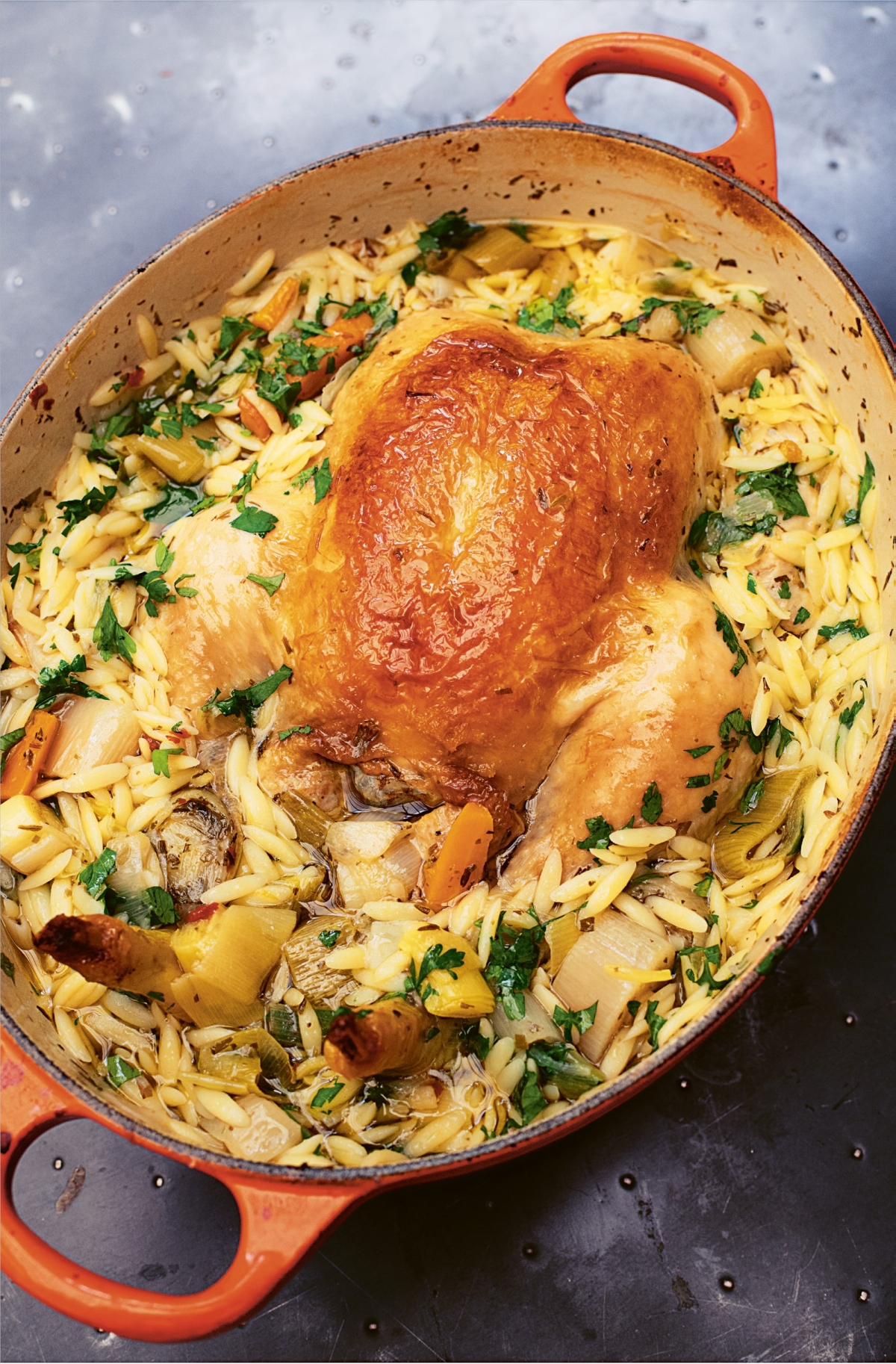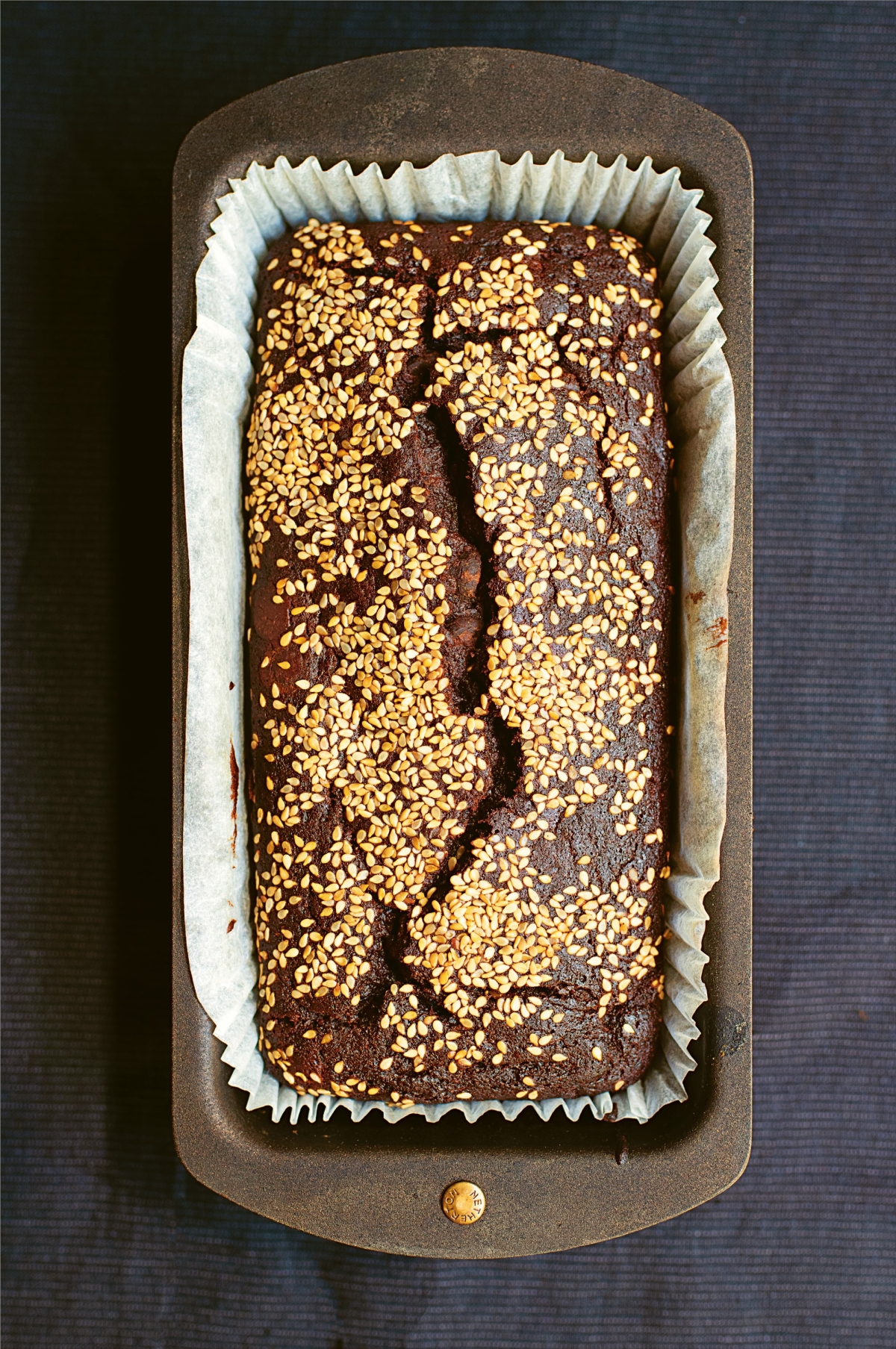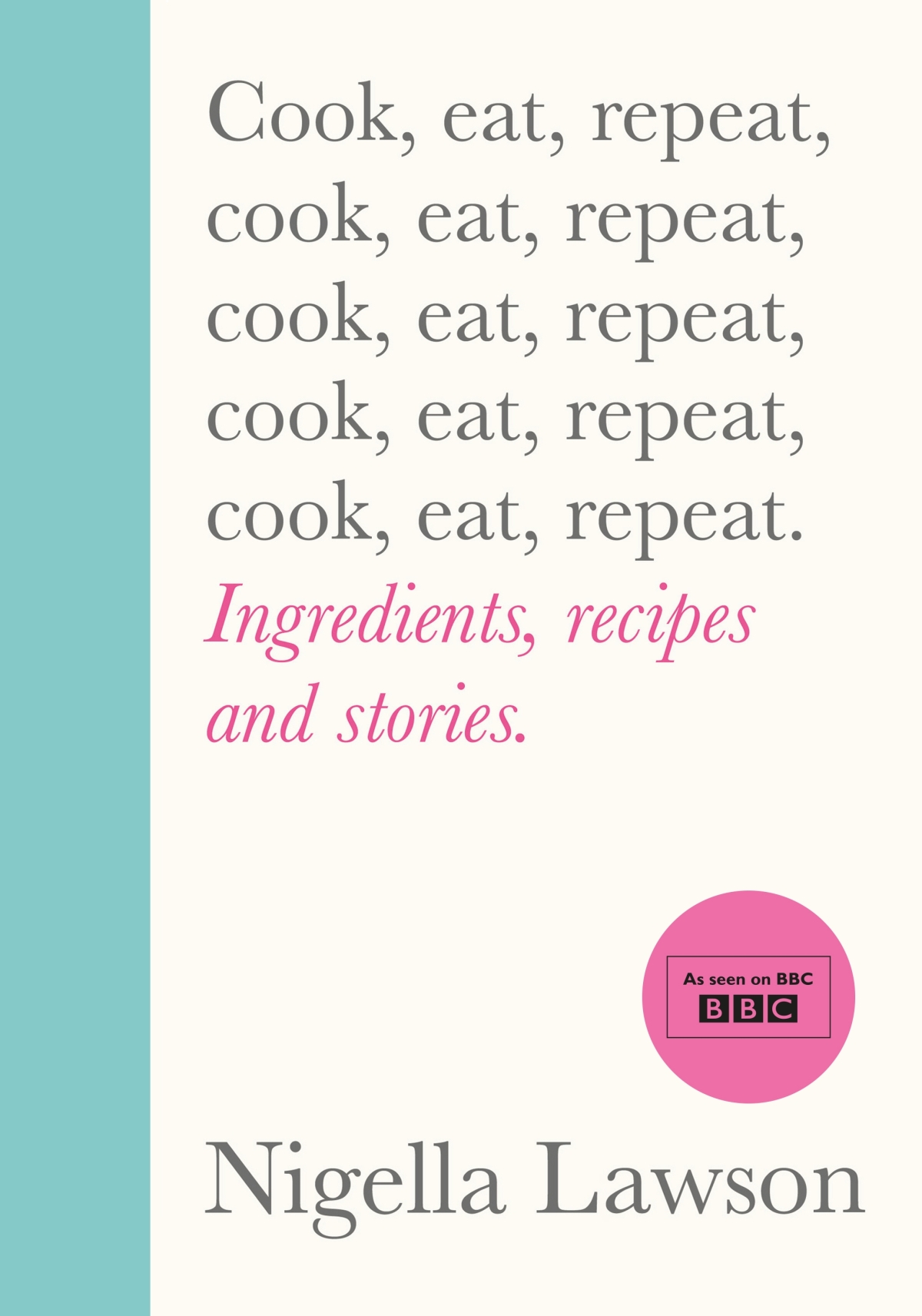
‘Food, for me, is a constant pleasure: I like to think greedily about it, reflect deeply on it, learn from it; it provides comfort, inspiration, meaning and beauty... More than just a mantra, “cook, eat, repeat” is the story of my life.’ Cook, Eat, Repeat is a delicious and delightful combination of recipes intertwined with narrative essays about food, all written in Nigella’s engaging and insightful prose. Whether asking ‘What is a Recipe?’ or declaring death to the Guilty Pleasure, Nigella’s wisdom about food and life comes to the fore, with tasty new recipes that readers will want to return to again and again. Set the table for a delicious meal with two recipes extracted from Nigella Lawson’s gift to home chefs, Cook, Eat, Repeat.
JUMP TO RECIPE
Chocolate, Tahini & Banana Two Ways
Chicken In A Pot
with Lemon And Orzo
“A family favourite, it’s a simple one-pot dish which brings comfort and joy, and it is my pleasure to share that with you.”
 Serves: 4–6
Serves: 4–6
1 chicken (approx. 1.5kg)
3 fat cloves of garlic
2 medium carrots (approx. 300g)
2 medium leeks (approx. 400g trimmed weight, or approx. 600g if you’re buying them untrimmed)
1 x 15ml tablespoon olive oil
2 lemons
2 teaspoons dried tarragon (or dried thyme)
2 teaspoons sea salt flakes (or 1 teaspoon fine sea salt)
½ teaspoon dried chilli flakes
1.5 litres cold water
300g orzo pasta
6 x 15ml tablespoons finely chopped flat-leaf parsley, plus more to serve
Freshly grated Parmesan, to serve
Untruss the chicken, if it comes trussed, and remove all the string. If time allows, let it stand out on a board for 40 minutes or so to let the chill come off it. Heat the oven to 180ºC/160ºC Fan.
Peel the garlic cloves, and peel and cut the carrots into three lengths across, and then into batons. Wash the leeks to remove any mud, if needed, and cut into approx. 2½cm rounds.
Heat the oil in a large heavy-based casserole with a tightly fitting lid; I use an enamelled cast-iron oval casserole 29cm long, in which the chicken fits neatly, leaving just a small space all around it to fit the vegetables later. Place the chicken in the hot oil breast-side down to colour the skin; I do this over high heat for 3–5 minutes, or until the skin is richly golden. Then turn the chicken the right way up.
Take the pan off the heat and, aiming for the space around the chicken, finely grate in the zest from the 2 lemons, then grate or mince in the garlic (obviously some can end up on the chicken itself), add the dried tarragon (or thyme) and give a quick stir into the oil as best you can.
Scatter the vegetables around the chicken, followed by the salt and chilli flakes (if using), and squeeze in the juice from your zested lemons.
Pour in the cold water – covering all but the very top of the breast – and put back on high heat, then bring the pot to a boil. Once it’s bubbling, clamp on the lid and carefully transfer to the oven to cook for 1¼ hours, though check to make sure the chicken is all but cooked through and the carrots soft.
Take the pot out of the oven, and add the orzo all around the chicken, and push it under the liquid, giving something as approximating a stir as you can manage in the restricted space. Put the lid back on, and return the casserole to the oven for another 15 minutes, by which time the orzo should be soft and swollen.
Let the casserole stand, uncovered, out of the oven for 15 minutes before serving. The orzo will continue to soak up the broth as it stands.
While you’re waiting, chop the parsley. Stir in 4 tablespoons, and then sprinkle over a little more. You could shred the chicken now, but it looks so wonderful in its pot I like to bring it to the table whole.
Place a dish by the casserole, and then pull the chicken gently apart with a couple of forks, removing any bones and skin that come loose to the dish. (For me, these bits are a particular treat: I live for the cartilage.) I find it easiest to do this while the chicken’s still in the pot but, if you prefer, you can try and remove it to a carving board; go carefully as it’s likely to fall to pieces a bit as you do so. Stir the chicken and orzo again and ladle into bowls, sprinkling with parsley as you go. You may also want to offer Parmesan to grate over: I prefer it without, but there is a strong pro-Parmesan contingent in my house.
Chocolate, Tahini & Banana Two Ways
“A warm, soft and squidgy cake, it is both embracingly cosy and almost regally sumptuous.”
 Gives: approx. 10 slices of banana bread or makes a pudding for 2–3
Gives: approx. 10 slices of banana bread or makes a pudding for 2–3
250g (approx. 2 medium) very ripe or overripe bananas (skin-on weight)
60ml olive or vegetable oil
50g tahini, at room temperature (and see recipe intro)
50g full-fat Greek yogurt, at room temperature (but only for the pud)
1 large egg, at room temperature
50g caster sugar
50g soft dark brown sugar for the pud; 35g for the bread
1 teaspoon vanilla extract
60g plain flour (or gluten-free plain flour)
25g cocoa
½ teaspoon bicarbonate of soda
¼ teaspoon fine sea salt
100g dark chocolate chips
1½ teaspoons sesame seeds, to sprinkle on top (only for the bread)
Heat the oven to 170°C/150°C Fan if you’re making banana bread, or 180ºC/160ºC Fan for the pudding. Put a paper liner into a 1lb (450g) loaf tin or, for the pudding, get out an ovenproof dish with a capacity of about 750ml; mine is 18cm in diameter and 5cm deep.
Peel the bananas (don’t throw the skins away, though, but use them to make the Banana Skin and Cauliflower Curry on p.35) and, either by hand or using an electric mixer, mash the bananas, then beat in the oil. I use an American ¼ cup (60ml) measure to do this, and then fill it up with tahini (conveniently, 60ml of tahini weighs 50g) and beat that in. If you’re making the pudding, beat in the yogurt (you can also fill the ¼ cup measure with it to get 50g). Whether you’re making the pudding or the bread, now’s the time to beat in the egg, then the sugars and vanilla.
Whisk or fork together the flour, cocoa, bicarb and salt and slowly beat into the batter and when you can no longer see any specks of white, fold in the chocolate chips with a bendy spatula, which you will need to scrape the runny batter into either loaf tin or ovenproof dish. If it’s banana bread you’re making, sprinkle over the sesame seeds.
First, instructions for the bread: cook for 45–50 minutes until risen and firm to the touch, or until a cake tester comes out almost clean; some chocolate chips will make it a little sticky in parts. And don’t worry about the cracks on the top; that is part of its deal, as it is for the pudding. Let it cool completely in its tin on a wire rack and – if you can bear to wait – once it’s cold, slip it out of the tin and wrap it in baking parchment, then foil, and leave it for a day before slicing and eating. I understand if this is too much to ask; I confess I don’t always manage to wait.
And now for the pudding-cake: cook for 40–45 minutes, depending on whether you want it to have a gooily molten centre or not. Once it’s out of the oven, let it stand for 5–10 minutes before diving in for that first squidgy spoonful.
Extracted from Cook, Eat, Repeat by Nigella Lawson, out now
YOU MAY ALSO ENJOY
10 Affordable dishes that are guaranteed to win the family over









